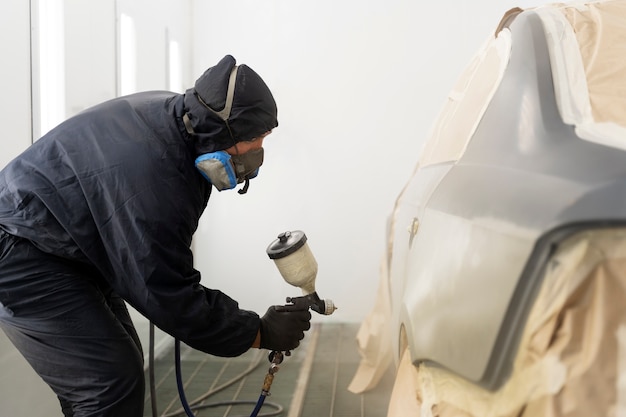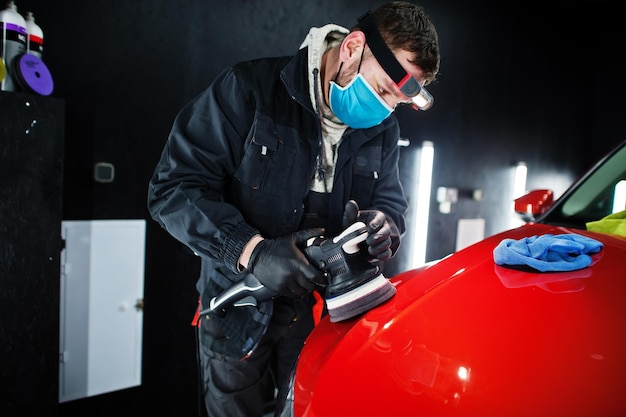Common Auto Body Repairs Explained: From Dents To Full Restorations
Auto body repairs are an essential aspect of vehicle maintenance, ensuring that your car remains safe, functional, and visually appealing. Whether it’s a minor dent from a parking lot mishap or a full restoration of a classic vehicle, understanding the types of repairs available can help car owners make informed decisions about their vehicles. This article explores the most common auto body repair, from minor fixes to comprehensive restorations.
Minor Auto Body Repairs
Dents and Dings
Dents and dings are among the most common types of auto body damage. They can occur from various incidents, such as a shopping cart bumping into your car or a hailstorm. These minor imperfections can often be fixed with techniques like paintless dent repair (PDR).
PDR is a cost-effective and efficient method for removing minor dents without affecting the vehicle’s original paint. This technique involves specialized tools that gently push the dent out from the inside of the panel, restoring the car’s surface to its original condition. PDR is suitable for small to medium-sized dents where the paint remains intact.
Scratch and Chip Repairs
Scratches and chips can detract from your vehicle’s appearance and expose the underlying metal to rust. These imperfections can result from gravel, minor collisions, or even car washes.
For small scratches and chips, touch-up paint can be a quick fix. This involves cleaning the damaged area, applying a matching paint color, and finishing with a clear coat. While this method can hide minor blemishes, it may not be suitable for larger areas of damage.
For slightly deeper scratches, wet sanding and buffing can help. This process involves sanding the scratched area with fine-grit sandpaper, then buffing it with a polishing compound to blend the scratch with the surrounding paint. It’s a more advanced technique that often yields better results than touch-up paint.

Moderate Auto Body Repairs
Bumper Repair
Minor bumper damage, such as scratches or small dents, can often be repaired using specialized tools and techniques. This may include plastic welding for cracks or using fillers and paint to restore the bumper’s appearance.
Bumper Replacement
In cases where the bumper is severely damaged or compromised in its ability to protect the vehicle, replacement is the best option. A new bumper will be matched to your vehicle’s make and model, ensuring proper fit and safety.
Welding and Panel Alignment
Replacing a body panel typically involves cutting away the damaged section and welding in a new piece. It’s crucial that the new panel is aligned correctly to ensure proper fit and appearance. This process may also involve repainting the panel to match the rest of the vehicle.
Frame Straightening
In more severe accidents, the vehicle’s frame can become bent or twisted. A damaged frame can affect the car’s handling, safety, and alignment.
Frame Repair Techniques
Frame straightening involves using specialized equipment to measure the extent of the damage and apply controlled force to realign the frame. Modern frame straightening machines use laser technology to ensure precise measurements and corrections, restoring the vehicle to its original specifications.

Major Auto Body Repairs
Full Body Painting
Over time, a vehicle’s paint can become faded, chipped, or scratched beyond repair. A full body repaint can breathe new life into an older vehicle or change its color entirely.
- Surface Preparation: Before painting, the vehicle’s surface must be thoroughly prepared. This includes sanding down the existing paint, repairing any dents or imperfections, and applying a primer. Proper surface preparation is crucial for achieving a smooth, long-lasting finish.
- Painting and Clear Coating: The painting process involves applying several coats of paint, followed by a clear coat to protect the finish and enhance its shine. Professional auto body shops use high-quality paints and techniques to ensure an even, durable finish.
The sleek and aerodynamic car body style not only enhances the vehicle's visual appeal but also improves fuel efficiency and performance on the road.
Disassembly and Inspection
The restoration process begins with a complete disassembly of the vehicle. Each component is inspected, repaired, or replaced as needed. This step is crucial for identifying underlying issues that may not be visible during a surface inspection.
Body and Paint Work
Once the vehicle is disassembled, the body is repaired and repainted. This can involve extensive metalwork, rust repair, and panel replacement. The goal is to restore the body to its original condition, with perfect alignment and a flawless paint finish.
Mechanical Restoration
In addition to the body work, a full restoration often includes rebuilding or replacing the engine, transmission, suspension, and other mechanical components. This ensures the vehicle not only looks like new but also performs reliably.
Reassembly and Finishing Touches
After the body and mechanical work are complete, the vehicle is reassembled. This includes installing new or restored interior components, such as seats, carpets, and trim. Attention to detail is critical in this stage to achieve a factory-new appearance and feel.
Choosing the Right Auto Body Shop
Selecting the right auto body shop is essential for ensuring high-quality repairs. Here are some tips for finding a reputable shop:
- Check for Certifications: Look for certifications from organizations like the National Institute for Automotive Service Excellence (ASE) or the Inter-Industry Conference on Auto Collision Repair (I-CAR). These certifications indicate that the shop meets industry standards for training and quality.
- Read Reviews and Ask for Recommendations: Customer reviews and word-of-mouth recommendations can provide valuable insights into the quality of a shop’s work. Look for reviews that mention the shop’s attention to detail, customer service, and ability to meet deadlines.
- Get Multiple Estimates: Before committing to a repair shop, obtain estimates from several places. This will give you an idea of the going rate for the repairs you need and help you avoid overpaying.
- Ask About Warranties: Reputable auto body shops often provide warranties on their work. Ask about the terms and duration of the warranty to ensure you’re covered if any issues arise after the repair.
110 E 43rd St, Suite 120
Garden City, Idaho 83714, USA
Phone: (208)-251-5338

